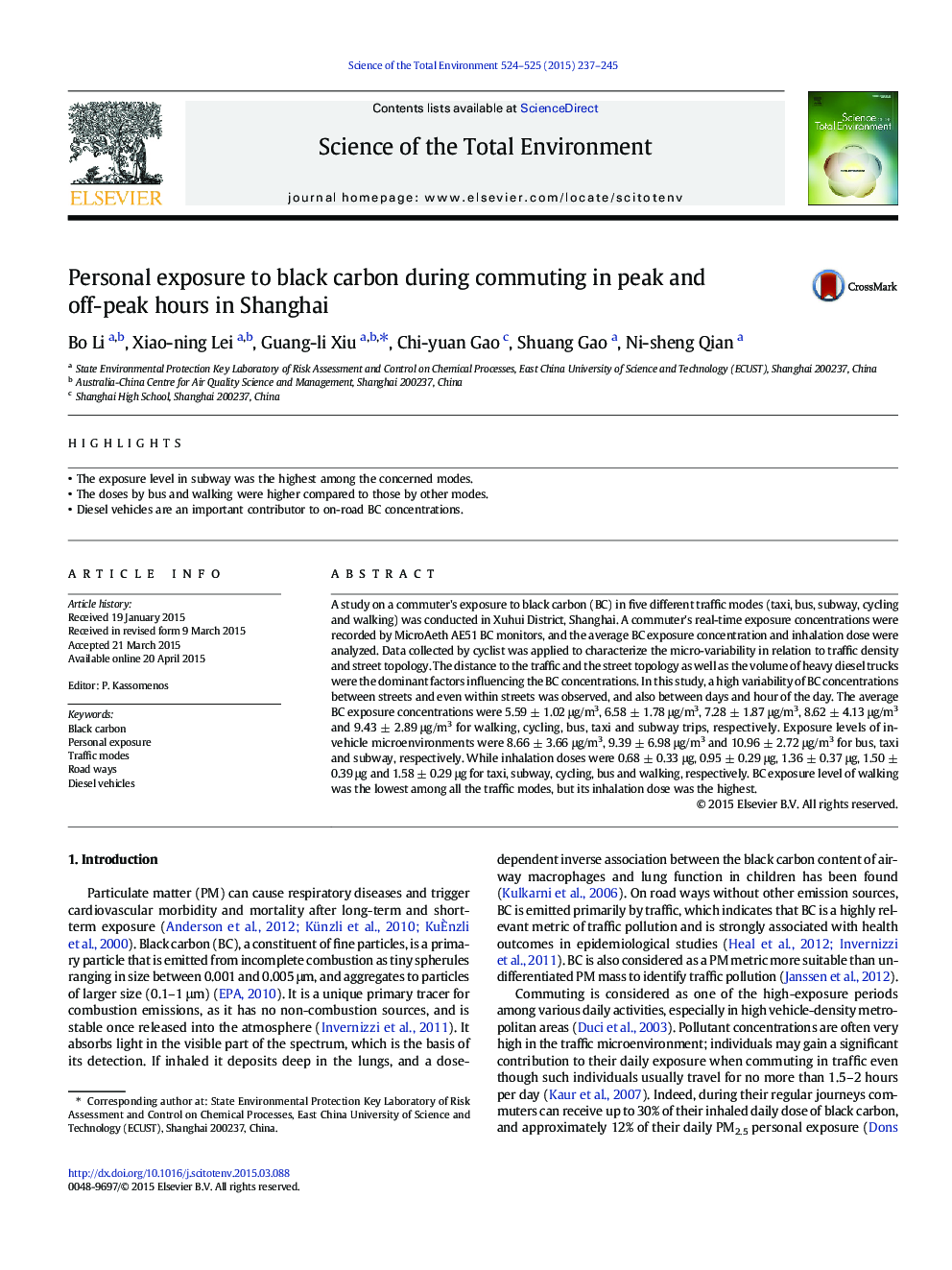| Article ID | Journal | Published Year | Pages | File Type |
|---|---|---|---|---|
| 6326729 | Science of The Total Environment | 2015 | 9 Pages |
Abstract
A study on a commuter's exposure to black carbon (BC) in five different traffic modes (taxi, bus, subway, cycling and walking) was conducted in Xuhui District, Shanghai. A commuter's real-time exposure concentrations were recorded by MicroAeth AE51 BC monitors, and the average BC exposure concentration and inhalation dose were analyzed. Data collected by cyclist was applied to characterize the micro-variability in relation to traffic density and street topology. The distance to the traffic and the street topology as well as the volume of heavy diesel trucks were the dominant factors influencing the BC concentrations. In this study, a high variability of BC concentrations between streets and even within streets was observed, and also between days and hour of the day. The average BC exposure concentrations were 5.59 ± 1.02 μg/m3, 6.58 ± 1.78 μg/m3, 7.28 ± 1.87 μg/m3, 8.62 ± 4.13 μg/m3 and 9.43 ± 2.89 μg/m3 for walking, cycling, bus, taxi and subway trips, respectively. Exposure levels of in-vehicle microenvironments were 8.66 ± 3.66 μg/m3, 9.39 ± 6.98 μg/m3 and 10.96 ± 2.72 μg/m3 for bus, taxi and subway, respectively. While inhalation doses were 0.68 ± 0.33 μg, 0.95 ± 0.29 μg, 1.36 ± 0.37 μg, 1.50 ± 0.39 μg and 1.58 ± 0.29 μg for taxi, subway, cycling, bus and walking, respectively. BC exposure level of walking was the lowest among all the traffic modes, but its inhalation dose was the highest.
Related Topics
Life Sciences
Environmental Science
Environmental Chemistry
Authors
Bo Li, Xiao-ning Lei, Guang-li Xiu, Chi-yuan Gao, Shuang Gao, Ni-sheng Qian,
